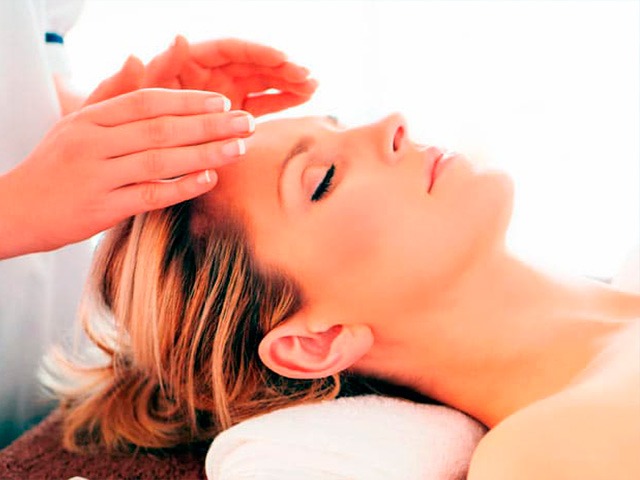Facial paralysis can be a life-altering condition, affecting everything from facial expression to speech and basic daily functions like eating and blinking. One of the most effective complementary treatments to alleviate the symptoms and help with recovery is therapeutic massage. At Relaxing Time Massage, we understand the importance of combining relaxation and rehabilitation to help restore movement and improve quality of life.
What is Facial Paralysis?
Facial paralysis occurs when there is a partial or total loss of voluntary muscle movement on one side of the face. This condition is usually caused by injury to the facial nerve, which is responsible for controlling various vital functions. The facial nerve performs four primary functions:
- Sensory function in the ear canal.
- Movement control of muscles on one side of the face.
- Regulation of tears and saliva.
- Taste sensation in the anterior part of the tongue.
Symptoms of Facial Paralysis
The symptoms of facial paralysis are usually quite evident and noticeable. The absence of voluntary muscle movement causes one side of the face to appear flaccid and unresponsive. Common symptoms include:
- Inability to close the eye on the affected side.
- Loss of sensitivity in the ear canal on the affected side.
- Deviation of the mouth towards the unaffected side, which can lead to asymmetry.
- Pain or discomfort in the ear.
- Reduced saliva production on the affected side of the mouth.
- Loss of taste in the front part of the tongue on the paralyzed side.
The severity of these symptoms depends on the extent of the nerve damage. Some symptoms may not appear if the nerve is not significantly affected.
Common Causes of Facial Paralysis
There are multiple factors that can cause facial paralysis, with the most common being idiopathic, meaning the cause is unknown (known as Bell’s Palsy). This accounts for 40% of cases. Other causes include:
- Traumatic injuries: Facial paralysis caused by physical trauma affects 28% of cases.
- Viral infections: Herpes Zoster (shingles) and acute ear infections.
- Tumors: Growths that affect the facial nerve.
How Relaxing Time Massage Can Help: Physiotherapy and Massage Techniques for Facial Paralysis
At Relaxing Time Massage, we offer a variety of therapeutic massage techniques designed to aid in the recovery of facial paralysis. Combined with physiotherapy and local heat treatments, these therapies can help relieve symptoms, improve muscle tone, and enhance circulation to the affected areas.
1. Local Heat Therapy
Applying moist heat to the affected area can help improve circulation and relieve muscle tension. A moist compress placed on the paralyzed side for about 10 minutes can stimulate blood flow, reduce stiffness, and promote relaxation in the muscles.
2. Electrotherapy
Electrotherapy involves the use of low-level electrical currents to stimulate the motor points of facial muscles. This technique can help reactivate the facial nerve and enhance muscle recovery by stimulating the affected area, improving muscle strength, and increasing flexibility.
3. Assisted Active Exercises
Active exercises involve guiding the patient’s facial muscles through the desired movements. With assistance from the therapist’s fingers placed gently on the muscle, the patient can move their face in the desired direction. These exercises are done continuously, and the therapist reduces assistance as the muscle strengthens and regains movement.
4. Manual Muscle Lifting
Using gentle finger lifting, the affected muscles are gradually lifted and held for a few seconds to help the muscle regain its strength and flexibility. This technique, when performed progressively, can support muscular recovery and improve facial symmetry.
Massage Techniques for Facial Paralysis
Massage plays a key role in stimulating muscle recovery and reducing facial asymmetry caused by paralysis. At Relaxing Time Massage, we utilize specialized techniques designed to work with the affected muscles:
1. Cheek Stretching and Eye Closing
- Place the left thumb inside the right cheek (on the affected side).
- Use the index and middle fingers on the outside of the cheek, gently pulling towards the healthy side to stretch the cheek.
- Be careful not to pull too much on the lower eyelid of the affected side.
- Close the eyes gently, followed by forceful eye closure, keeping the cheek stretched. This can help strengthen the muscles around the eyes and mouth.
2. Jaw and Mouth Manipulation
- With gentle pressure, use the fingers to manipulate the mouth muscles, helping to correct facial drooping.
- This can encourage a more balanced appearance and activate the muscles that control speech and facial expressions.
Conclusion: Restore Balance with Relaxing Time Massage
Facial paralysis can be a challenging condition, but with the right treatment, including massage therapy and physiotherapy, recovery is possible. At Relaxing Time Massage, we are committed to offering specialized treatments designed to help you regain muscle movement, reduce pain, and restore balance to your facial features. Our therapists work with you closely to create a personalized treatment plan, ensuring a safe and effective recovery process.
If you’re suffering from facial paralysis and want to explore the healing benefits of massage therapy, contact us at Relaxing Time Massage to book your session today. Let us help you feel rejuvenated and restored!
Frequently Asked Questions (FAQs)
1. Can massage completely cure facial paralysis?
Massage therapy can significantly improve muscle recovery and symmetry, but it is important to note that complete recovery may take time and depends on the extent of the nerve damage. Consulting with a medical professional is advised.
2. How many sessions are needed for facial paralysis massage therapy?
The number of sessions varies depending on the severity of the paralysis. Typically, several sessions are required, with gradual improvement seen over time.
3. Is hot stone therapy effective for facial paralysis?
Yes, hot stone therapy can be beneficial when used in combination with other techniques. The heat helps to relax muscles, stimulate blood flow, and reduce muscle stiffness.
4. Can electrotherapy help with facial paralysis recovery?
Yes, electrotherapy is an effective way to stimulate facial muscles and improve circulation, contributing to faster recovery of nerve function and muscle strength.

